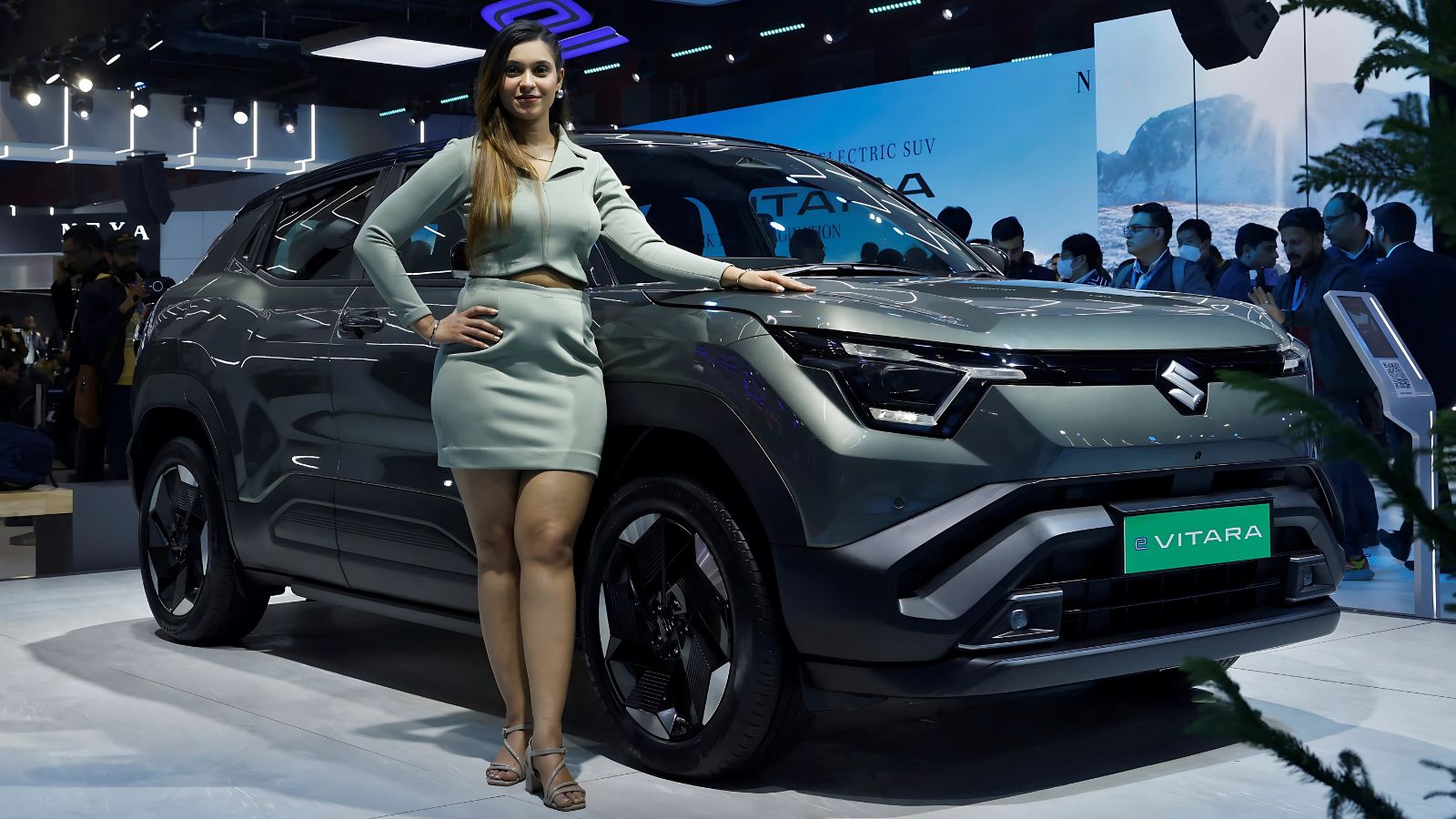The automotive landscape in Australia is about to witness a significant milestone as Suzuki confirmed on Wednesday that its first fully electric vehicle (EV), the e Vitara, would be making its way to Australia in the first quarter of 2026. This announcement marks a pivotal moment for the Japanese automaker, representing their bold entry into the rapidly expanding electric vehicle market Down Under.
A Historic First for Suzuki
The eVitara isn’t just another electric SUV entering the market – it’s a watershed moment for Suzuki. This marks the first time Suzuki has ever mass-produced an EV, representing a significant milestone in Suzuki’s goal of achieving carbon neutrality. The vehicle emerged from the striking 2023 Suzuki eVX concept, transforming futuristic design language into production reality.
Michael Pachota, general manager for the automotive division of Suzuki Australia, emphasized the significance: “The e Vitara is our bold step into the future of mobility”. This sentiment reflects not just Suzuki’s commitment to electrification, but their understanding of changing consumer demands in the Australian market.
Technical Specifications That Impress
The engineering behind the eVitara demonstrates Suzuki’s serious approach to electric mobility. The vehicle will come in three distinct variants – a two-wheel-drive with a 49kWh battery capacity putting out 106kW from a front motor and maximum torque of 189Nm, and a slightly more powerful two-wheel-drive version with a 61kWh battery capacity, putting out 128kW from the front motor.
For those seeking maximum capability, a 61kWh four-wheel-drive model serves as the top-of-the-line model, with front and rear motors putting out a combined 135kW of power and a maximum torque of 300Nm. This all-wheel-drive system, dubbed “ALLGRIP-e,” incorporates sophisticated trail modes that provide genuine off-road capability while maintaining efficient on-road performance.
The platform itself represents collaborative innovation. Based on Suzuki’s latest Heartect-e architecture developed with Toyota and Daihatsu’s involvement, the eVitara is claimed to offer class-leading cabin space thanks to its generous 2700mm wheelbase and clever battery packaging.
Design Philosophy Meets Practicality
Dimensionally, the eVitara strikes an appealing balance between compactness and utility. Measuring 4275mm long, the latest eVitara is 100mm lengthier than the current petrol-powered Vitara. It is 1800mm wide, stands 1636mm tall and draws stylistic inspiration from the striking 2023 Suzuki eVX concept’s design.
The interior showcases modern connectivity without overwhelming complexity. Inside, the new eVitara boasts a 10.1-inch digital instrument cluster, a 10.25-inch infotainment system, a two-spoke multi-function steering wheel, wireless phone charging, wireless smartphone mirroring and a rotary gear selector. These features position the eVitara competitively against established electric SUVs while maintaining Suzuki’s reputation for user-friendly design.
Market Positioning and Competition
The eVitara enters a fiercely competitive segment, directly challenging established players. The new 2025 Suzuki eVitara has yet to be confirmed for Australia, but when it arrives, it will target rivals like the BYD Atto3, MG ZS EV and the Hyundai Kona Electric. This positioning suggests Suzuki understands the importance of the compact electric SUV segment in Australia’s evolving automotive market.
Range expectations appear promising, with several outlets predicting that the base model will manage around 400 kilometres. This figure would place the eVitara competitively within its segment, addressing one of the primary concerns Australian consumers have about electric vehicle adoption.
Pricing Considerations and Market Reality
While Australian pricing remains unconfirmed, international markets provide some guidance. Last week Suzuki announced UK pricing for the e Vitara, which will be priced from £29,999 for 49kWh Motion 2WD model, which currently converts to around $A63,000, and up to £37,799 ($A79,000) for the top-of-the-line model. However, as the source notes, these conversions rarely translate directly to Australian pricing due to local market factors, taxation, and import considerations.
Strategic Partnerships and Development
Interestingly, the eVitara represents more than just Suzuki’s individual effort. In a bid to share the high cost of development eVitara was developed alongside an equally compact Toyota that is primed to be called the Urban SUV. This collaboration demonstrates how manufacturers are pooling resources to accelerate electric vehicle development while maintaining their unique brand identities.
Australian Market Readiness
Suzuki Australia’s approach to electric vehicles reflects broader market realities. Michael Pachota has expressed interest in introducing electric models to the local market, but suggested that an EV-dominated Australian market is unlikely to happen in the short- to mid-term future. This realistic assessment acknowledges infrastructure challenges and consumer adoption patterns while positioning Suzuki for long-term growth.
The company’s strategy appears measured rather than rushed. Pachota said that markets change and customer demands will always evolve, noting concerns about global EV leader Tesla’s strategy of regularly slashing prices which had eroded customer loyalty and resale values.
Looking Forward: The Road to 2026
As Australia moves toward the first quarter of 2026, the eVitara represents more than just another electric vehicle launch. It symbolizes Suzuki’s commitment to sustainable mobility while maintaining the practical, reliable character that has defined the brand for decades.
The eVitara’s arrival will test several market assumptions: whether Australian consumers are ready for Japanese electric SUVs, how pricing will affect adoption, and whether Suzuki’s traditional strengths in reliability and practicality translate effectively to electric powertrains.
For Australian drivers considering their next vehicle purchase, the eVitara offers an intriguing proposition. It combines Suzuki’s reputation for dependable, well-engineered vehicles with modern electric technology and genuine off-road capability. As the automotive industry continues its inexorable shift toward electrification, the eVitara positions Suzuki not as a follower, but as a thoughtful participant in Australia’s electric future.
The countdown to 2026 has begun, and the eVitara promises to add a compelling new option to Australia’s expanding electric vehicle landscape. Whether it succeeds will depend on execution, pricing, and most importantly, whether it delivers on Suzuki’s promise of combining their traditional strengths with the demands of modern electric mobility.
